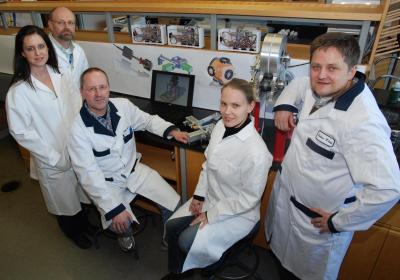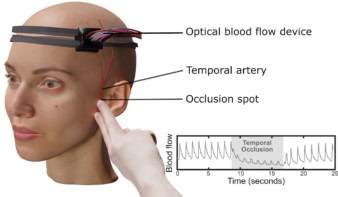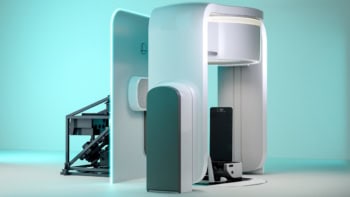
Scientists in Canada are the first to make commercial quantities of the medical isotope technetium-99m using medical cyclotrons. The material is currently made in just a few ageing nuclear reactors worldwide, and recent reactor shutdowns have highlighted the current risk to the global supply of this important isotope.
Technetium-99m is useful for medical imaging because it emits only gamma rays and can be incorporated into a number of different molecules that target different types of tissue in the body. Today it is made in nuclear reactors by creating a radioactive isotope of molybdenum that then decays to technetium-99m.
The entire supply of the isotope for North America is made at the 60-year-old NRU reactor in Canada, which has experienced two extended, unscheduled shutdowns in the past decade.
As a result, the Canadian government challenged the nation’s scientists to develop a new method of making the isotope that would use the medical cyclotron accelerators found in many major hospitals. These cyclotrons are already used to make other isotopes, but making technetium-99m in commercial quantities using accelerators has evaded physicists since it was first proposed more than 40 years ago.
Right on target
Now, a team including Paul Schaffer, head of the Nuclear Medicine Division at the TRIUMF accelerator lab in Vancouver, has cracked the problem after two years of hard work. The main challenge was designing a target of molybdenum-100 that produces significant amounts of technetium-99m when irradiated with protons from a cyclotron. Efficiency is important because molybdenum-100 is extremely expensive. They also had to come up with a way of extracting the isotope in a rapid way – it has a half-life of about 6 h – and is in a chemical form that can be used in medical applications. Also, because of the high cost of the target, it must be recyclable.
“We took the principles of physics, chemistry and engineering that people have known for years, and used them to write a recipe for upgrading a cyclotron so it could be used to make technetium-99m,” explains Shaffer.
The team has shown that the method can be used on two different commercial medical cyclotrons in Canada – which means that it is compatible with many cyclotrons worldwide. The next step for the team is to gain regulatory approval for the cyclotron-made isotope to be used in medical procedures. This should take less than two years, according to the scientists.
Cyclotron-based production is also compatible with how many medical physicists see as the future of medical isotopes. It is expected that technetium-99m procedures will be replaced by positron-emission tomography, which also uses isotopes made in cyclotrons.



